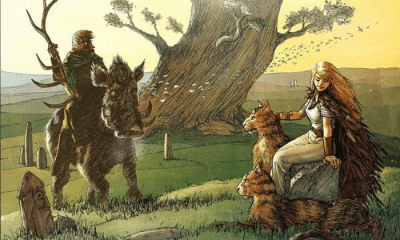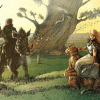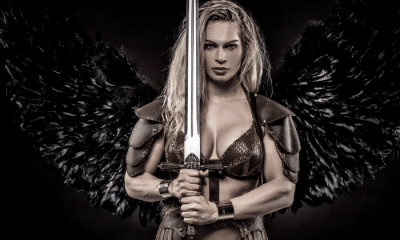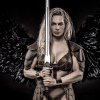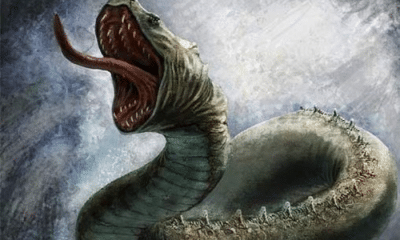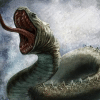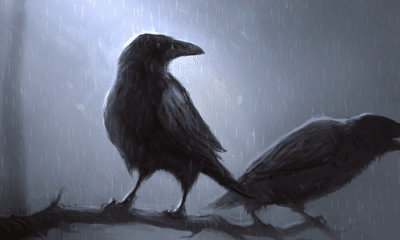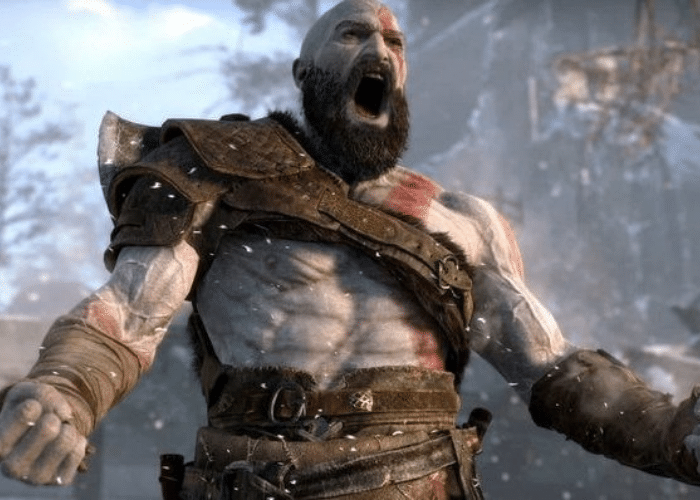
Norse
Ragnarök: The Twilight of the Gods
Ragnarök: The Twilight of the Gods
The end of the world is one of the most well-known stories from Norse mythology, but how well do you really know what will happen at Ragnarök?
Many cultures believed they knew not only how the world was formed, but also how it would end. None detailed the destruction of their world as much as the Norse, however.
Ragarök, the fated last battle of the gods, is the culmination of all of Norse mythology. Many surviving sources make it clear that the gods knew their fate and that all the legends that surrounded them were building toward the inevitable end of the world.
Odin was the first to learn about Ragnarök, but the other Aesir and Vanir were soon aware of their fates. None, however, could do anything to change what was to come.
Ragnarök, it was believed, will grow from the escalated enmity between Loki and the gods. When Loki and his children finally launch an attack against the world of men, they will be joined by even more monsters.
The Norse did not only detail how Ragnarök would play out, but what the fates of their gods would be. They knew which would die and which would survive to rebuild a new world.
So who will fight at Ragnarök and how will the world go on? Keep reading to find out!
How Odin Learned about Ragnarök
According to most sources, the gods have advance warning that Ragnarök will eventually destroy them.
In the Poetic Edda and other accounts, Odin journeys to Hel in his endless quest for knowledge. He goes there to consult a dead völva, or woman with knowledge of magic, who is said to have a unique insight into the woven threads of fate.
The völva does have a great amount of wisdom to impart. In addition to telling Odin about the creation of the Nine Worlds, she also tells them how the worlds of men and the gods will end.
The wise woman tells him the details of Ragnarök, a term that in Old Norse meant the Fate of the Gods. Modern English translations often call it their twilight.
Odin as knowledge of what is to come, but is powerless to stop it. While he has vast knowledge of fate and magic, none of the gods are skilled enough to undo what the Norns have woven.
In many poems, the gods express awareness of their fate. As the events that will lead to Ragnarök come to pass, they acknowledge their approaching ends but can do nothing to change what will happen.
The most important moment in the lead-up to Ragnarök is the death of Odin’s son, Baldr. The well-loved god will be killed as Loki’s tricks against the gods become more destructive and malicious.
Frigg asks everything in existence to swear they will not harm Baldr. Only a sprig of mistletoe, which is actually Loki in disguise, refuses to take the vow.
Frigg thinks nothing of the small plant. Loki makes an arrow out of mistletoe, however. As the gods make a game of watching objects swerve to avoid hitting Baldr, Loki offers the arrow to Odin’s blind son Höðr.
Not knowing the danger, Höðr shoots the arrow after Loki aims it. Baldr is killed instantly.
Hel agrees that Baldr can return to the living if he is truly as loved as Frigg claims. If every living thing weeps for the dead god, Hel will release him.
Frigg and the other gods travel throughout the Nine Worlds and every creature they meet cries for Baldr’s death. Only one giantess, again Loki in disguise, is unmoved.
Because one creature does not cry over the loss of Baldr, he is doomed to remain in Hel.
The Rise of Loki and His Children
After Baldr’s death, any remaining friendship between the gods and Loki is lost.
Loki’s monstrous children had already been dealt with when the gods learned of their existence. Hel was sent to her own realm, Jörmungandr was thrown into the sea, and Fenrir was bound with chains after biting off Tyr’s hand.
For causing Baldr’s death, Loki is bound as well. A serpent drips venom into his face. Although his dutiful wife tries to collect the drops in a bowl, they burn him whenever she has to leave to empty the vessel.
One of the first events of Ragnarök will be the freedom of Loki and all his children.
The serpent Nidhogg will cause enough damage to Yggdrasil’s root to make the World Tree shake and sway. The root will move away from Nifheim, allowing Hel and her legions of the dead to leave their frozen realm.
Fenrir will snap the chains that bind him and run loose. He will immediately begin tearing apart the land and attacking any living thing he sees.
Jörmungandr, the serpent who is big enough to encircle the whole of Midgard, will haul himself out of the sea. He will crush the land and bring giant waves out of the sea to destroy anything on its surface.
The gods will not initially know that Loki has been freed. They will learn that he is loose only when he appears at the helm of Naglfar, the ship made of the bones of the dead. His crew will be frost giants and dead criminals.
As Loki and his children wreak havok, the fire giants of Muspelheim will seize the opportunity to launch their own attack. They will swarm into Midgard, throwing fire across the land.
Their leader, Surtr, will march his army up the Bifröst, the rainbow bridge that connects Midgard and Asgard. As the bridge crumbles beneath their weight Heimdall will blow his horn, officially announcing the beginning of Ragnarök.
The End of Men Before Ragnarök
Humankind, however, will be spared the final battle. The people of Midgard will have died long before the final battle begins.
The invasion of Loki’s offspring and their allies will not begin until after Fimbulwinter, an intensely cold and icy winter that will last for three full years.
This bitter winter will starve or freeze most people. The few who survive will be reduced to a life of violence and hardship:
Brothers will fight and kill each other
sisters’ children will defile kinship.
It is harsh in the world, whoredom rife
an axe age, a sword age, shields are riven
a wind age, a wolf age, before the world goes headlong.
No man will have mercy on another.
-Poetic Edda (trans. Dronke)
The masses who die in Fimbulwinter will have ignoble and undistinguished ends. This means they will join Hel’s massive army and bolster the forces before the battle begins.
Any people who survive the hardships and violence and Fimbulwinter will see the sun and moon disappear from the sky as the wolves that have chased them for centuries finally devour them.
Yggdrasil’s weakened roots will make all of Midgard shake. Jörmungandr’s arrival will cause more earthquakes, probably breaking Fenrir’s chains and causing mountains and cities to crumble to dust.
Jörmungandr’s crushing weight and tidal waves will kill thousands. And anyone unlucky enough to come across Fenrir will be torn apart and devoured.
When nearly all of mankind has died, roosters will crow in three worlds.
A jötunn shepherd will happily play his harp as a crimson cock crows on his world. A golden rooster will alert the gods and warriors of Valhalla. A soot-red bird will let Hel know that her legions can leave Niflheim.
Odin’s last act before the battle begins in earnest will be to consult the head of Mímir once more, but no additional knowledge can change fate.
The Last Battles of the Gods
The völva in Hel’s realm goes so far as to detail which gods and monsters will fight and die in their final battle.
When Heimdall signals the time has come, the gods will gather their armies to meet their enemies on the plain of Vígríðr. The fights will be as follows:
- Odin and the hosts of Valhalla will fight Fenrir. The world will devour the king of the gods and all his warriors.
- Víðarr, one of Odin’s sons will the engage the wolf. Wearing a boot made from every piece of discarded shoe leather in history, he will be able to hold open the beast’s mouth and drive his sword into its throat.
- Garm, Hel’s guard dog, and Tyr will fight one another. They will kill each other.
- Thor will fight Jörmungandr. Although he will be able to kill the serpent, Thor will be bitten. He will walk nine steps after the fight before the venom overcomes him and he falls.
- Heimdall will kill Loki, but will suffer fatal wounds as well.
- Freyr and Surtr will fight one another on the Bifröst. They will both die, but Surtr will survive long enough to see fire consume Midgard.
After the battle, Vígríðr will be completely soaked in blood. The few survivors will barely escape before the fire giants spread flames across Midgard.
The land will burn to ash and completely sink into the sea.
Although the deaths of many gods are prophesied, it can be assumed that others will fall in battle without being named. There will, however, be survivors.
The Survivors of Ragnarök
When the völva reveals the fate of Ragnarök, Odin is horrified to hear that the gods and all of mankind will be killed. He asks what will happen to those who die in battle and whether anyone will remain after Midgard is destroyed.
The völva confirms that new realms will be opened for the afterlife. Two will be pleasant, but the third will be even worse than Hel’s realm had been before.
In Náströnd, oathbreakers and murderers will wade through snake venom. The text implies that Nidhogg will survive and harass the dead here just as he did in Niflheim.
Not everyone will immediately be sent to one of these three worlds, however. A few will survive the end of the world.
Odin’s sons, Víðarr and Váli, will meet where Asgard once stood. It will now be an empty field and they will build a new home there for the next generation of gods.
Thor’s sons Magni and Móði will join them, now sharing possession of their father’s hammer.
Baldr will return from Hel and be reconciled with Höðr. They will search the field and find the gods’ lost game pieces so they can play as they recount their memories of the Aesir.
From the Vanir, Hoenir and Njord will survive. They will join with the remaining Aesir to create a single pantheon.
As the gods rebuild their own home, Midgard will also be revived.
New land will emerge from beneath the sea and soon become even more lush and fruitful than the old world had been.
When this happens, the only humans to survive Ragnarök will also reappear. After hiding in the branches of Yggdrasil during the fighting, Líf and Lífþrashir will make their way onto the new land and begin to repopulate it.
Sól, the sun goddess, will have been eaten but will have a daughter before her death. As radiant and beautiful as her mother, this new sun goddess will take her place in the sky and give light to the reborn world.
Pagan and Christian Views
As with most Norse myths, what we know about Ragnarök comes largely from medieval sources.
While many people in medieval Scandinavia, particularly Iceland, still worshipped the gods of their ancestors, Christianity had taken a foothold by that time. The Viking Age was a thing of the past and Norse culture was rapidly changing to reflect that of Christian Europe.
Because the surviving stories were written in this period, it is almost certain that the writers had some familiarity with both Christian teaching and the classical Greco-Roman culture that had influenced the rest of Europe. Even if they were still pagan themselves, their culture was changed by these influences.
Many historians believe that the story of Ragnarök in particular shows the influences of Christian and Roman thought.
Earlier versions fo the story, they believe, did not end in the same way. The promise of rebirth and a happy ending probably came with Christianity.
The Christian faith offered a more positive vision of life after death. While all Christians were given the chance to reach heaven, only a few Norse men could hope to join the ranks of Valhalla.
Whether in Valhalla or Hel, their afterlife was also not eternal. They would one day fall in battle, whether as a warrior of Odin or one of Hel’s horde.
The story of Ragnarök changed due to this influence. The promise of a new start gave people more hope for the afterlife.
Even if they were sent to Hel as common people, the second creation after Ragnarök offered a more pleasant alternative. The promise of rebirth and a fresh world is similar to early Christian views of both Heaven and resurrection.
Many details of the story also seem to betray outside influence. The field of battle, for example, is reminiscent of the field of Megiddo in the Christian prophecy of Armageddon.
The inclusion of three crowing roosters also seems like an example of Christian influence. They mirror the story of Peter, who denied Jesus three times before he heard the rooster crow.
Surtr and his fire giants have also been compared to Christian images of Satan and Hell.
In 9th century Germany, a poem about the Last Judgment was written called Muspilli. An exact etymology has not been proven for this poem, but the muspilli are quite likely connected to Muspelheim and its inhabitants as imagined in Norse mythology.
Ultimately, it is almost impossible to say how much the version of Ragnarök that we know today was influenced by other cultures of Europe.
While the Scandinavians of the Viking Age undoubtedly had their own story about how the world would end and the gods would die, it is also certain that their story was much different than the one that has been passed down to modern readers.
Ragnarök: The End of the World
According to the Norse poets, Odin learned how the world would end in great detail.
Known as Ragnarök, the last battle of the gods would be sparked by the growing enmity between Loki and the Aesir. After Baldr’s death, Loki’s imprisonment will cement his hatred for Odin and the Aesir.
Loki and his monstrous brood will eventually break free. They will invade Midgard, joined by giants from both Muspelheim and Niflheim.
Meanwhile, the people of Midgard will be virtually wiped out by three years of brutal winter. When the sun and moon are destroyed, the few remaining humans will live in a land of terror and violence.
Surtr and his fire jötnar will move toward Asgard. When they do, Heimdall will blow his horn and announce the official beginning of the battle.
The gods and their enemies will meet. Odin, Thor, and others will defeat their foes but be killed in the process.
Midgard will be destroyed by fire and the land will sink completely beneath the water.
A handful of gods will survive, however. They will regroup on the plain that once held Asgard and plan for a new generation of gods.
A new afterlife will be created in which both gods and men will spend the rest of time. A new sun will go into the sky as fertile land emerges from Midgard’s sea.
One surviving human couple who hid in Yggdrasil’s branches will come out and repopulate the new lush world.
This story may not be entirely Norse, however. The era in which the surviving works were written was after the Viking Age, when Christianization and Greco-Roman influence began to change the old stories.


